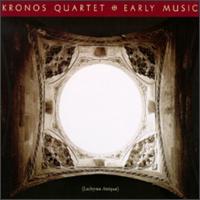
"I suddenly realized that in the language, or at any rate in the spirit of the Glass Bead Game, everything actually was all-meaningful, that every symbol and combination of symbols led not hither and yon, not to single examples, experiments, and proofs, but into the center, the mystery and innermost heart of the world, into primal knowledge. Every transition from major to minor in a sonata, every transformation of a myth or a religious cult, every classical or artistic formulation was, I realized in that flashing moment, if seen with truly a meditative mind, nothing but a direct route into the interior of the cosmic mystery, where in the alternation between inhaling and exhaling, between heaven and earth, between Yin and Yang, holiness is forever being created" ...
"After each symbol conjured up by the director of a Game, each player was required to perform silent, formal meditation on the content, origin, and meaning of this symbol, to call to mind intensively and organically its full purport. The members of the Order and of the Game associations brought the technique and practice of contemplation with them from their elite schools, where the art of contemplation and meditation was nurtured with the greatest care."
-- Hermann Hesse, The Glass Bead Game

from HipBone Games:
Strategy games to stretch the mind, develop innovative approaches -- and overcome seemingly insurmountable tasks. A HipBone Game is a game of creative leaps between thoughts. The thoughts themselves are the "moves" the players make, and the "links" they claim between them are what make the game challenging and enjoyable -- and the process itself a powerful tool for uncovering tacit knowledge, while building bonds of collegiality, respect and friendship between players.
What's a HipBone move?
A move can be any idea - usually a concept, a quote or vision statement, a goal or process - and the trick is to find ideas that are richly interesting in their own right, but which also connect in the most stimulating and insightful ways with the ideas your colleagues play. The idea is "named" to a particular position on the board, and the player then claims links with the ideas in play in adjacent positions.
What's the payoff?
A HipBone board is like a mind-map, in that you place ideas in circles on the game-board, linked by those creative leaps of thought to other ideas which other players have come up with - but it pushes the limits of creativity farther than mind-mapping, by providing a "tight" formal structure in which the links must be made. Players compete to find the most striking links, while collaborating to build the most brilliant structure of ideas. Since the links consist of similarities and oppositions, homologies and analogies between the ideas in play, a full game of ten moves becomes a tightly woven joint architecture of ideas - and creates an almost telepathic melding of the minds and hearts of the various players.
Second Grade Example:
1. In the nursery rhyme, Peter Piper picked a peck of pickled this.
2. We call the crystals that early peoples used to trade with this.
3. Don't play with matches, you might light a this.
4. Three quarters of the earth's surface is covered with this.
5. Mount Saint Helen's is one this, and Vesuvius is another.
6. The Atlantic is one this, and the Pacific is another.
7. The geyser Old Faithful is a hot water this.
8. No two flakes of this are identical.
9. All the colors of the rainbow mixed together come out this.
10. The largest mammal on the planet is a this.













No comments:
Post a Comment